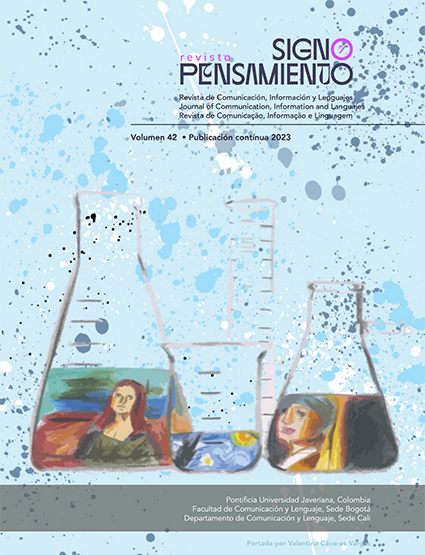Resumen
El acercarnos al rap de jóvenes indígenas colombianos, ha sido una posibilidad de afectación por medio de sus ritmos, narrativas de vidas e historias; movilizando y resignificando comprensiones sobre lo indígena como apuestas en tensión en su desajuste conceptual propiamente. Para ello, se abordaron las políticas de autorrepresentaciones reflejadas en sus propuestas musicales, se identificaron las disputas que emergen desde el rap y la manera en que entran en contacto con estas desde las emociones. Como resultado y primera contribución se teoriza a manera de intervención el IndianiRAP como un proceso identitario que transgrede las concepciones binaristas y salvacionistas de los sujetos indígenas catalogados como seres puros e inamovibles.
Ahmed, S. (2015). La Política Cultural de la Emociones. Edinburgh University Press.
Altez, Y. (2015). Hermenéutica y configuración histórica de las identidades culturales. Estudios sobre las Culturas Contemporáneas, (44), 3-80.
Altieri, C. (2003). The Particulars of Rapture: An Aesthetics of the Affects. Cornell University Press.
Anzaldúa, G. (1999). Borderlands. La Frontera, The New Mestiza. Aunt Lute Books.
Blackman, L. y Cromby, J. (2007). Affect and Feeling. International Journal of Critical Psychology, 21, 5-22.
Briones, C. y Del Cairo, C. (2014). Prácticas de fronterización, pluralización y diferencia. UniversitasHumanística, 80(80), 13-52. https://doi.org/10.11144/Javeriana.UH80.pfpd
Cacopardo, A. (2018). Nada sería posible si la gente no deseara lo imposible. Entrevista a Silvia Rivera Cusicanqui. Andamios, 15(37), 179-193. https://doi.org/10.29092/uacm.v15i37.635
Frith, S. (1996). Música e identidad. En S. Hall y P. du Gay (ed.), Cuestiones de identidad cultural (pp. 181-213). Amorrortu Editores.
Grimson, A. (2011). Los límites de la cultura. Crítica de las teorías de la identidad. Siglo XXI Editores.
Guerrero, N. (2017). El impacto Nasa de John Jota, el Indio del Rap. Pacifista. https://pacifista.tv/notas/el-impacto-nasa-de-john-jota-el-indio-del-rap/
Hall, S. (1996). Introducción: ¿quién necesita «identidad»?. En S. Hall y P. du Gay (eds.), Cuestiones de identidad cultural (pp. 181-213). Amorrortu Editores.
Hansen, A. y Machin, D. (2019). Media and communication research methods. Red Globe Press.
Pratt, M. (2010a). Ojos Imperiales Literaturas de viajes y Transculturación. Fondo de Cultura Económica.
Pratt, M. (2010b). “La indigeneidad hoy. Epílogo”. En M. de la Cadena y O. Starn (eds.), Indigeneidadescontemporáneas: cultura, política y globalización. Instituto Francés de Estudios Andinos.
Reguillo, R. (2003). Políticas de representación y desafíos culturales. La visibilidad de América Latina. A renglón seguido, 53(3), 34-43.
Restrepo, E. (2012). Intervenciones en teoría cultural. Universidad del Cauca.
Restrepo, E. (2014). Sujeto e identidad. En E. Restrepo (coord.), Stuart Hall desde el sur: legados y apropiaciones (pp. 97-117). Consejo Latinoamericano de Ciencias Sociales.
Slobin, M. (1993). Subculture Sounds. Micromusic of the West. Wesleyan University Press.
Walley, C. (2015). Transmedia as experimental ethnography: The Exit Zero Projetc, deindustrialization, and the politics of nostalgia. American Ethnologist, 42(4), 624-639. https://doi.org/10.1111/amet.12160

Esta obra está bajo una licencia internacional Creative Commons Atribución 4.0.
Derechos de autor 2023 German Andres Santofimio Rojas


